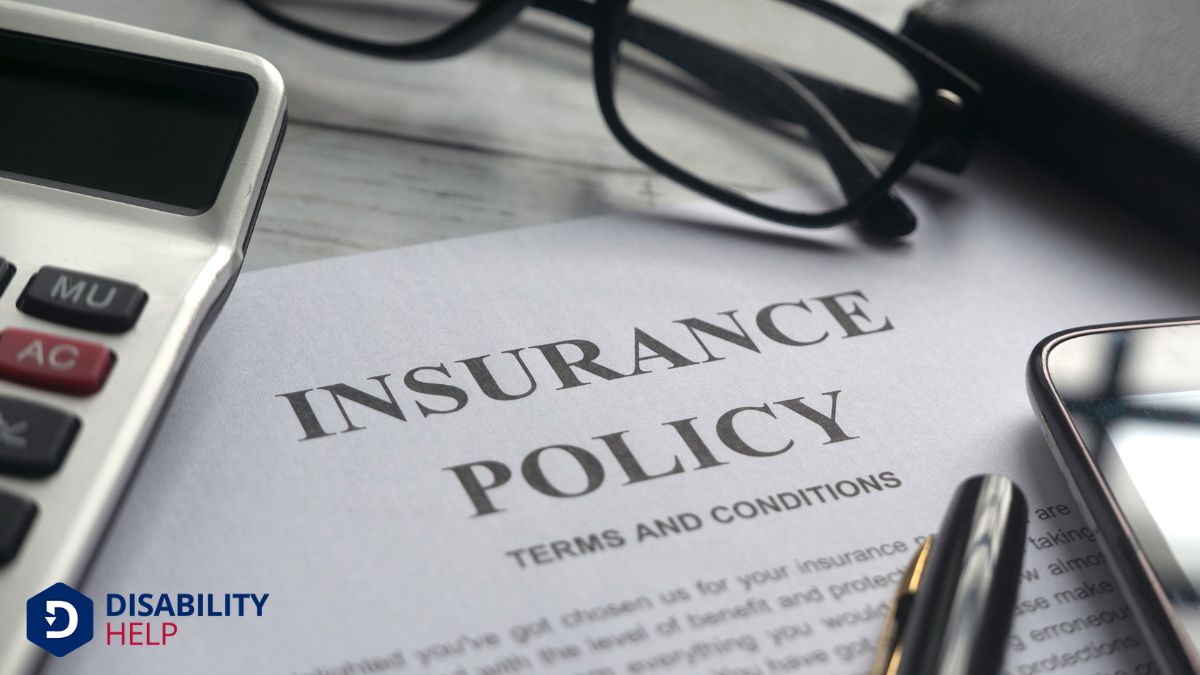When we're faced with the task of choosing the right disability insuranceA form of insurance that provides income to individuals who are unable to work due to a disability. policy, it can feel overwhelming. With so many options and details to weigh, where do we begin? Let's focus on understanding our financial needs, the types of policies available, and key features to evaluate. By doing so, we can make an informed decision that aligns with our unique circumstances and long-term goals. Ready to navigate this essential aspect of financial planning?
Key Takeaways
- Assess your financial needs to determine the necessary coverage amount for living expenses.
- Compare short-term and long-term policies for suitability based on your potential disability duration.
- Evaluate policy definitions of "disability" to ensure eligibility aligns with your circumstances.
- Review available riders like own-occupation and residual disability for comprehensive coverage.
- Research insurer reputation and financial stability to ensure claim reliability and satisfaction.
Understanding Disability Insurance Basics

Disability insurance acts as a financial safety net, ensuring we maintain income if we're unable to work due to illness or injury.
It's vital to understand the basics to make informed decisions. First, let's grasp the core concept: disability insurance replaces a portion of our income, helping us cover living expenses when we can't earn due to unforeseen circumstances.
We should consider how much of our income the policy will replace, ensuring it aligns with our financial needs.
Additionally, understanding the policy's definition of "disability" is important, as it affects eligibility for benefits. Policies may vary regarding duration and waiting periods before benefits kick in.
Types of Disability Insurance Policies
When exploring disability insurance options, it’s important to understand the different types available and how they cater to our specific needs.
Primarily, we encounter two main types: short-term and long-term disability insuranceInsurance that provides income replacement for individuals who are unable to work for an extended pe.... Short-term policies provide benefits for temporary disabilities, typically lasting from a few months up to a year. These are ideal if we anticipate a quick recovery.
On the other hand, long-term disability insurance supports us for extended periods, sometimes until retirement age, if we're unable to work due to a lasting disability.
Additionally, we should consider group versus individual policies. Group policies often come through employers and might offer limited customization.
Individual policies, while potentially more expensive, allow us to tailor coverage to fit our unique circumstances, providing peace of mind.
Assessing Your Financial Needs and Goals
When we're choosing a disability insurance policy, let's first consider how much coverage we need for our monthly expenses.
We should also think about our long-term financial goals to guarantee our policy aligns with future plans.
Monthly Expense Coverage
Understanding our monthly expense coverage is an essential step in selecting the right disability insurance policy.
We must determine our financial needs by evaluating our current living expenses. Here's how we can get started:
- List all monthly expenses: Include rent or mortgage, utilities, groceries, transportation, and any other recurring costs. This gives us a clear picture of our financial commitments.
- Identify variable and fixed expenses: Fixed expenses (like rent) remain constant, while variable expenses (like dining out) can change. Knowing the difference helps us plan more effectively.
- Evaluate total income: Compare our total monthly income against our expenses, ensuring we recognize the gap disability insurance needs to cover.
Long-term Financial Planning
As we commence on long-term financial planning, it's crucial to assess our financial needs and goals with precision. We must first identify our current financial situation, including income, expenses, and savings.
Let’s think about our future goals, whether it’s buying a home, funding education, or planning for retirement. These goals will guide our disability insurance choices.
Next, we need to evaluate the potential impact of a disability on our finances. How long could we sustain our lifestyle without income? This helps us determine the coverage duration and benefit amount needed.
Let’s consider inflation’s impact, ensuring our policy can adaptA grassroots disability rights organization in the U.S. that focuses on promoting community-based se... over time. By aligning our disability insurance with our financial goals, we create a safety net that supports our future aspirations.
Evaluating Policy Features and Riders
Why is it so important to understand the features and riders of a disability insurance policy?
Because these elements can greatly impact the policy’s effectiveness and guarantee it meets our unique needs.
Let’s explore a few key considerations:
- Own-occupation rider: This rider guarantees we receive benefits if we're unable to perform the duties of our specific job, even if we can work in another capacity.
- Residual disability rider: This option provides partial benefits if we're able to work, but at a reduced capacity, which may lead to a decrease in income.
- Cost-of-living adjustment (COLA): This feature adjusts our benefits according to inflation, maintaining our purchasing power over time.
Comparing Premiums and Costs
When comparing premiums and costs of disability insurance, it's vital to balance affordability with extensive coverage. We must evaluate how much we can comfortably pay without sacrificing the protection we need.
It’s important to take into account the policy's premium structure, whether it’s level or increasing, and how it fits into our long-term financial plan. Let’s look at deductibles and waiting periods, as they can greatly affect premiums. The longer the waiting period before benefits kick in, the lower the premium might be.
However, we shouldn't choose solely based on price. We need to guarantee that the coverage aligns with our financial obligations and lifestyle. By carefully examining these factors, we can select a policy that offers peace of mind without breaking the bank.
Reviewing Insurer Reputation and Financial Stability
While examining premiums and costs is important, we also need to pay attention to the insurer's reputation and financial stability. Choosing an insurer with a strong reputation guarantees that we're dealing with a company that has a history of treating its policyholders well.
Financial stability is just as vital; it means they'll be around to pay our claims if needed. Here's how we can evaluate these factors:
- Check Ratings: Look at ratings from agencies like A.M. Best, Moody's, or Standard & Poor's. These ratings indicate financial health.
- Read Reviews: Explore customer reviews and testimonials to understand others' experiences with the insurer.
- Research History: Investigate the company's claim settlement history and longevity in the industry to gauge reliability.
Seeking Professional Advice and Consultation

How can we guarantee we're making the best decision when choosing a disability insurance policy? One effective way is to seek professional advice. We might feel overwhelmed by the technical details and options, but consulting with an insurance expert can clarify complex terms and conditions. They help us understand specific policy elements, such as benefit periods and waiting periods, ensuring we select coverage that truly fits our needs.
Additionally, financial advisors can offer insights tailored to our financial situation, helping us align the policy with our long-term goals.
It's essential to choose professionals with a solid reputation and experience in disability insurance. By doing so, we empower ourselves to make informed choices, giving us confidence and peace of mind in our decisions.
Conclusion
In choosing the right disability insurance policy, let's remember it's about aligning our financial needs with the right coverage. We should assess our monthly expenses, consider the policy types, and evaluate key features like definitions of "disability" and riders. Comparing premiums is essential, as is checking the insurer's reputation and stability. By doing our homework and perhaps seeking professional advice, we can secure a policy that truly supports our long-term financial goals.






